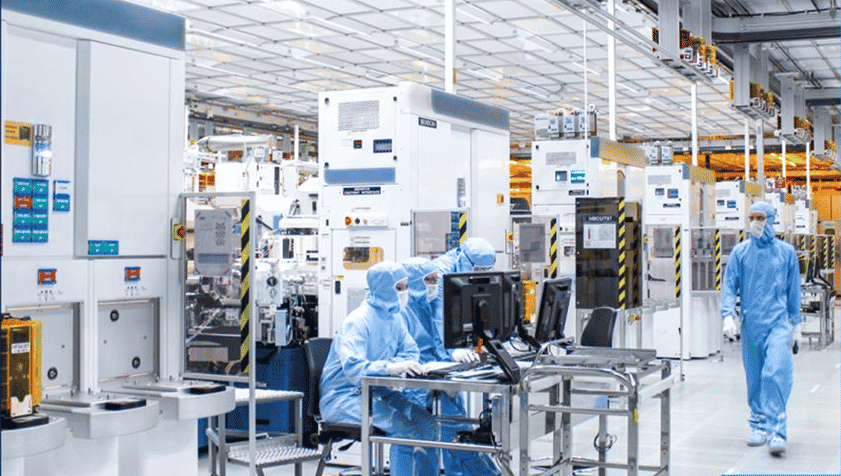
Using GaN technology to reduce the power losses of power converters by half and divide their volume by three
STMicroelectronics is deploying GaN-on-Silicon technology to address the need for more energyefficient power electronics…

Improve the energy performance of the industrial processes used and decarbonize the energy used on these sites.
This project includes two actions:
The structural design phase began in Q4 2020 and the project will be completed in 2021.
on which the project has a significant impact
Scope 1 – Lower use of gas boilers to heat clean rooms or offices
Scope 2 – The chillers and free cooling systems use less electricity
Using the heat produced by the operation of the cooling units lowers the consumption of natural gas (7.27 GWh[GCV]/year) or 1,338 tCO2/year (considering an emission factor of 184 tCO2/GWh GCV).
The increased efficiency of the chillers and the use of free cooling systems saves 6.9 GWh/year, which represents 300 tCO2/year considering an emission factor of 43 tCO2/GWh.
More than 10 M€ in this project for the 3 sites.
2020
Crolles (Isère), Rousset (Bouches-du-Rhône), Tours (Indre et Loire) et Rennes (Ille et Vilaine)
Installing new generation cooling systems contributes to the following Sustainable Development Goals (SDGs):
The chillers with heat recovery and free cooling systems can also be installed on other sites in Europe. The feasibility study is underway.
These systems can also be installed on sites outside Europe. The potential is equivalent to the total for Europe. The feasibility study will take place in 2021.
Two partnerships have been established with:
sustainable.development@st.com

STMicroelectronics is deploying GaN-on-Silicon technology to address the need for more energyefficient power electronics…

STMicroelectronics is installing abatement systems in its production sites to reduce perfluorinated compounds emissions…
AFEP (Association of French large companies) is an association representing 111 of the largest companies operating in France. It participates in the public debate with the ambition to provide pragmatic answers in favour of the development of a competitive and sustainable French and European economy, conducive to the growth of all companies.